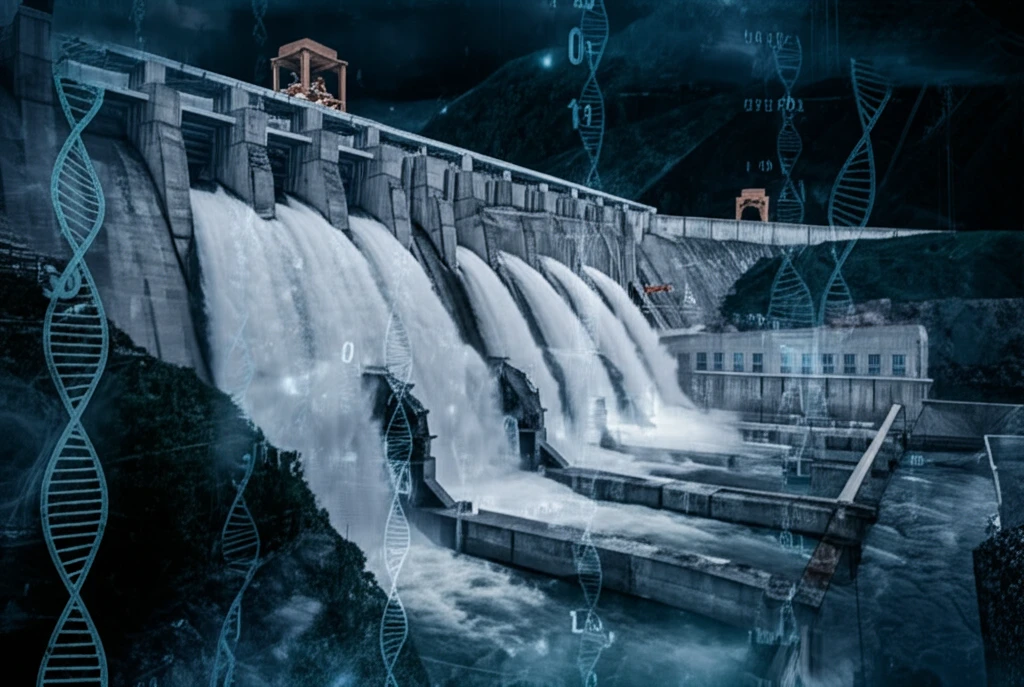
Optimize Hydroelectric Flow: How Kriging and Genetic Algorithms Can Power a Sustainable Future
"Discover how a cutting-edge approach integrating Kriging with genetic algorithms is revolutionizing hydroelectric flow optimization, promising a more efficient and sustainable energy future."
Hydroelectric power, a cornerstone of renewable energy, accounts for a significant portion of the world's electricity supply. Unlike finite resources, hydropower harnesses the continuous cycle of water, offering a sustainable alternative to fossil fuels. At the heart of every hydroelectric plant lies the challenge of optimizing flow—balancing energy generation with environmental considerations. This is no easy task, as it involves managing a complex interplay of factors, from turbine flow rates to reservoir storage levels.
Traditional optimization methods often fall short when tackling the intricacies of hydroelectric systems. These systems are governed by numerous variables that change hourly. Traditional optimization techniques are computationally expensive and may not always provide the most accurate results. This is where advanced computational techniques come into play.
A promising solution lies in integrating Kriging, a geostatistical technique, with genetic algorithms (GAs). This innovative approach offers a more efficient and accurate way to optimize hydroelectric flow, ensuring that we can harness the power of water in a sustainable and cost-effective manner.
The Kriging-GA Advantage: A Powerful Partnership for Hydroelectric Flow Optimization

The proposed approach integrates Kriging into the framework of genetic algorithms (GAs), offering a powerful solution for hydroelectric flow optimization. Kriging, originally developed in the field of geostatistics, excels at interpolating and predicting values across a spatial or temporal domain. By coupling Kriging with GAs, the computational effort associated with conventional GAs is significantly reduced without compromising accuracy.
- Reduced Computational Cost: Kriging helps create an approximate model of the system, reducing the number of actual function evaluations needed by the GA.
- Improved Accuracy: Kriging's bi-level approximation captures both global trends and local variations, leading to more accurate results.
- Handles Complex Systems: The Kriging-GA approach can effectively manage the numerous variables and constraints involved in hydroelectric flow optimization.
- Adaptability: While the study focuses on genetic algorithms, the Kriging methodology can be integrated with other optimization tools.
Powering a Sustainable Future with Smarter Optimization
The integration of Kriging with genetic algorithms represents a significant step forward in optimizing hydroelectric flow. By reducing computational costs and improving accuracy, this approach paves the way for a more efficient and sustainable energy future. As we continue to seek innovative solutions to meet our growing energy demands, techniques like Kriging-GA will play a crucial role in harnessing the power of renewable resources responsibly and affordably.
